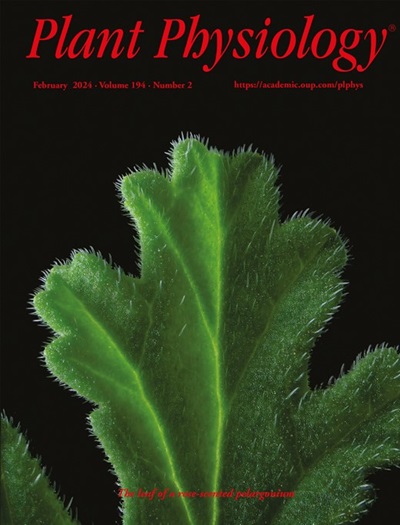A computer vision-based approach for high-throughput automated analysis of Arabidopsis seedling phenotypes.
IF 6.9
1区 生物学
Q1 PLANT SCIENCES
引用次数: 0
Abstract
Phenotype observations are common methodologies in plant biology studies, ranging from recording growth parameters to flowering dates. Identifying mutants or varieties with different phenotypes greatly advances our understanding of regulatory mechanisms in plant growth and development. Over the past two decades, naked-eye-based observations and manual measurements using ImageJ software have been leading approaches for recording phenotypes. However, these low-efficiency and error-prone methods have met difficulties in large-scale pipelines. Although some high-throughput imaging platforms have been commercialized, it remains challenging to efficiently, conveniently, accurately, and automatically analyze data generated by these platforms. To address this issue, we designed an automatic phenotype analysis tool. We trained a YOLOv11 (You Only Look Once version 11) model to locate Arabidopsis thaliana seedlings grown on petri dishes and developed a high-accuracy semantic segmentation model based on Swin Transformer and kernel update head, achieving a segmentation accuracy of 83.56% mIoU. By post-processing the segmentation masks, we automated the analysis of five representative seedling phenotypes: hypocotyl length, root length, root gravitropic bending angle, petiole length, and cotyledon opening rate. Compared with manual recording, our tool demonstrated high accuracy across all five phenotypes, offering a reliable and efficient solution for phenotypic analysis in plant research. Our automatic tool enables high-throughput phenotyping and will shift the traditional paradigm of phenotype recording.基于计算机视觉的拟南芥幼苗表型高通量自动分析方法。
表型观察是植物生物学研究中常见的方法,从记录生长参数到开花日期。鉴定具有不同表型的突变体或品种极大地促进了我们对植物生长发育调控机制的理解。在过去的二十年里,裸眼观察和使用ImageJ软件的人工测量一直是记录表型的主要方法。然而,这些低效率和容易出错的方法在大规模管道中遇到了困难。虽然一些高通量成像平台已经商业化,但如何高效、方便、准确、自动地分析这些平台生成的数据仍然是一个挑战。为了解决这个问题,我们设计了一个自动表型分析工具。我们训练了一个YOLOv11 (You Only Look Once version 11)模型来定位培养皿上生长的拟南芥幼苗,并基于Swin Transformer和内核更新头开发了一个高精度的语义分割模型,分割精度达到83.56% mIoU。通过对分割模板的后处理,我们自动分析了5种具有代表性的幼苗表型:下胚轴长度、根长度、根向地弯曲角、叶柄长度和子叶打开率。与人工记录相比,我们的工具在所有五种表型上都显示出较高的准确性,为植物研究中的表型分析提供了可靠和高效的解决方案。我们的自动工具能够实现高通量表型,并将改变传统的表型记录模式。
本文章由计算机程序翻译,如有差异,请以英文原文为准。
求助全文
约1分钟内获得全文
求助全文
来源期刊

Plant Physiology
生物-植物科学
CiteScore
12.20
自引率
5.40%
发文量
535
审稿时长
2.3 months
期刊介绍:
Plant Physiology® is a distinguished and highly respected journal with a rich history dating back to its establishment in 1926. It stands as a leading international publication in the field of plant biology, covering a comprehensive range of topics from the molecular and structural aspects of plant life to systems biology and ecophysiology. Recognized as the most highly cited journal in plant sciences, Plant Physiology® is a testament to its commitment to excellence and the dissemination of groundbreaking research.
As the official publication of the American Society of Plant Biologists, Plant Physiology® upholds rigorous peer-review standards, ensuring that the scientific community receives the highest quality research. The journal releases 12 issues annually, providing a steady stream of new findings and insights to its readership.
 求助内容:
求助内容: 应助结果提醒方式:
应助结果提醒方式:


